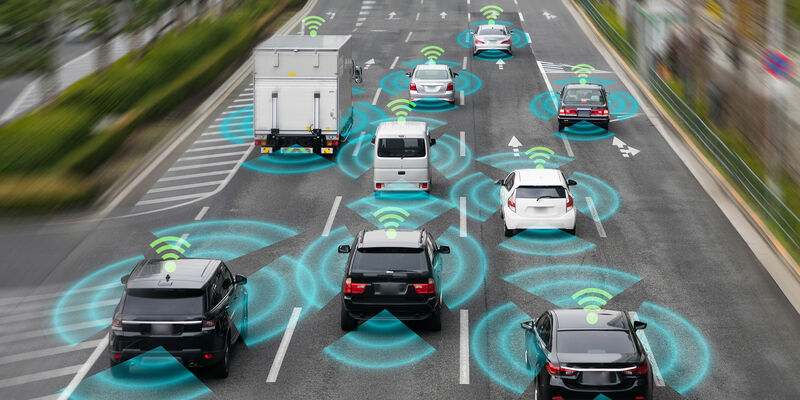
- The University , Research
- 11/11/2020
“Brainport Line offers TU/e an ideal test environment”
An emission-free public transport system in which vehicles drive over free lanes, to be completed in 2030, has to connect all campuses within the Brainport region. This Brainport Line, the initiators say, will solve the region’s mobility problems and has to grow into an export product. Carlo van de Weijer, director of TU/e institute EAISI, considers it the ideal test environment for various research activities related to this project. The initiators asked the National Growth Fund for a contribution of one billion euros for further development.
That amount of one billion euros, EAISI director Van de Weijer believes, is by no means exorbitantly high when you take into account the huge sums of money usually spent on major infrastructure projects in the Netherlands. “Look at Amsterdam’s North-South metro line for example, or the Zuiderzeelijn, the high-speed line that will shorten travel time between Amsterdam and Groningen. These projects were enormously costly as well, and it remains doubtful whether they will yield significant economic benefits.”
The benefits of this initiative, however, are clear from the very outset, Van de Wijer says: “It allows us to test several technologies, both current ones and those still under development, and it solves the mobility problems currently facing the region. In addition, it’s much more flexible, since we don’t opt for one particular transport system, such as rails for example. The Brainport Line is based on the idea that the intelligence is to be found in the vehicle and not in the infrastructure, which is nothing more than a reserved strip of asphalt. Whatever kind of vehicles we come up with in the future, this line can facilitate it.”
The project was initiated by the province of North Brabant, the municipality of Eindhoven and Brainport Development, with support, the initiators say, from industry and knowledge institutions in the region. Van de Weijer: “Naturally, we as TU/e want to play an important role in this project. Several technologies that will be used for the Brainport Line can already be found at practically all our departments. At Mechanical Engineering as far as vehicles and autonomous driving are concerned, in which research conducted at the departments of Mathematics and Computer Science and Electrical Engineering plays a vital role as well. But also at Built Environment, when it comes to urban planning and the question of how to control transport flows.”
Connect
The future transport system will connect all campuses in and around Eindhoven with each other and with regional work locations, and via Eindhoven Central Station with other national and international economic centers. The final design of the system has by no means been worked out in detail yet. According to the press release, the Brainport Line is ‘a smart and emission-free public transport system in which ‘pods’ of various sizes drive over free lanes, along interchanges at arterial roads and around existing public transport nodes.’ The system uses ‘sensor technology, autonomous driving and proven technology, such as platooning.’ The latter technology is a method for driving a group of electronically linked vehicles, usually trucks, in which the vehicle in front determines the speed and the route. The other vehicles follow automatically without help from the driver.
Van de Weijer emphasizes that the project’s strength lies in its flexibility. “You can add all kinds of newly developed technologies or newly designed vehicles at a later stage. Do you opt for a large, self-driving electric bus, or do you split it into two smaller busses, or do you opt for a number of smaller vehicles in the long term? Or do you combine all that? You can make those choices because we’re not tied to one transport system.”
Step by step
The initiators want to take their time and plan to introduce the Brainport Line step by step in the period up to 2030. The project also needs to contribute to the image of the Netherlands as a forerunner in the field of innovative and smart mobility, they write. They have already submitted a request to the Ministry of Infrastructure for a €1 billion contribution from the National Growth Fund for further development of the line.
Naturally, the development of the technologies needed for the project will not cease should their request be denied, Van de Weijer says. “We will simply continue in that case, but at a slower pace. The fact that we won’t have a test environment any longer to test those technologies in practice, will in fact be the most serious loss.”
Discussion